#eagle feather headdress
Explore tagged Tumblr posts
Text

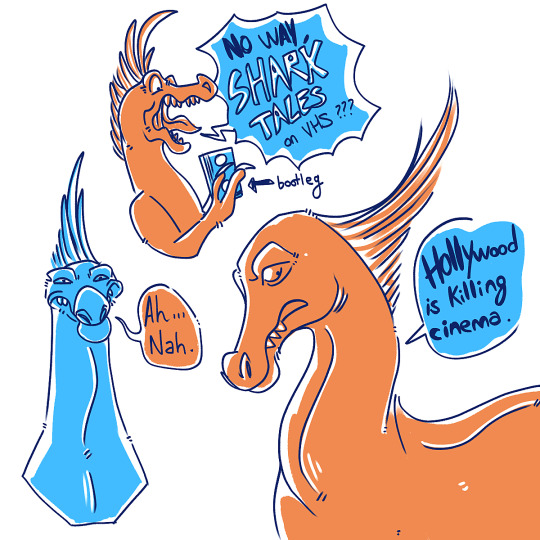

Hurik ! I don't draw her nearly enough - she's supposed to be the Main Character™ of my big story, but I keep focusing on other assholes instead. Sorry girl ! I'm trying new things with her design, mostly with her crest.
#she used to have an uncomfortable headdress looking thingie i don't vibe with it anymore#aiming for a cockatiel-like crest without the insensitive eagle feather coloring#idk if it works yet gonna try a few more options#oc#weird art of mine
8 notes
·
View notes
Text

Native American war bonnet made with golden eagle feathers, weasel skins, glass beads and dressed hide.
Belonged to Chief Sitting Bull of the Lakota Sioux tribe, c. 1870.
Source: Royal Ontario Museum.
4 notes
·
View notes
Photo
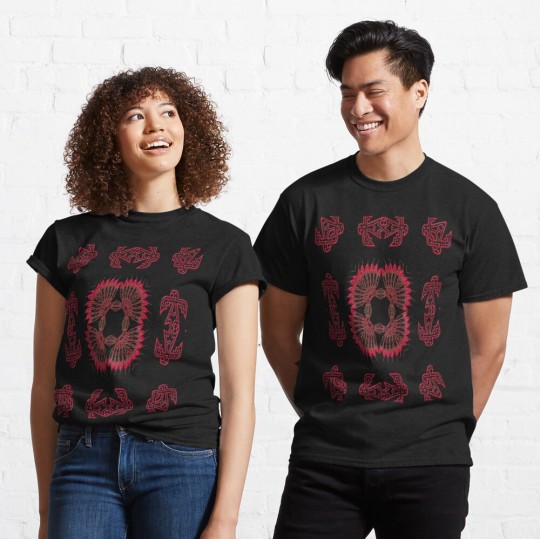


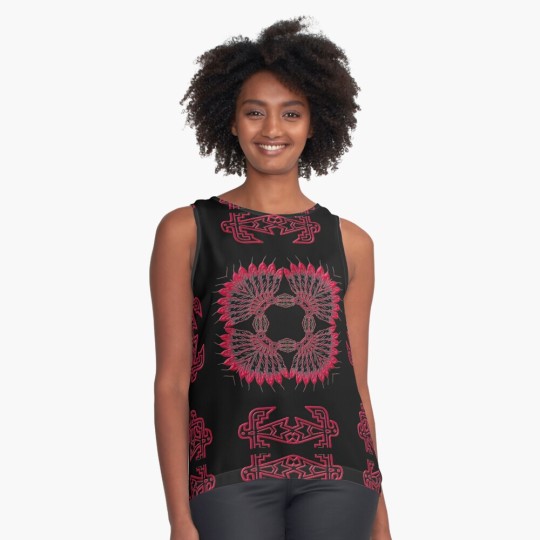
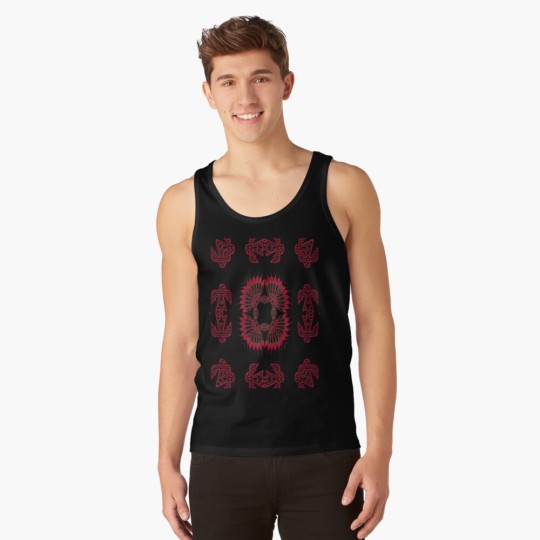
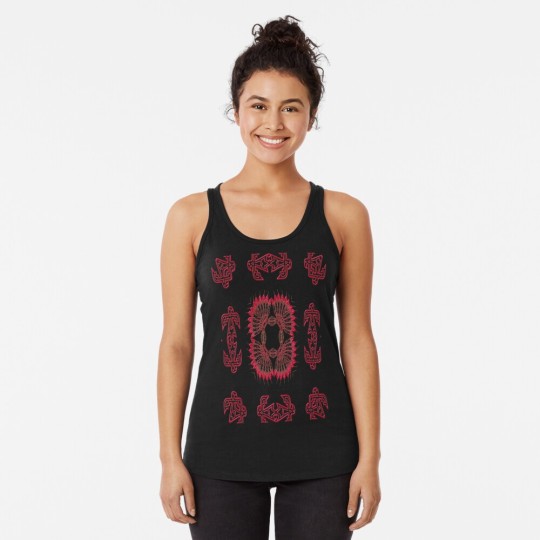
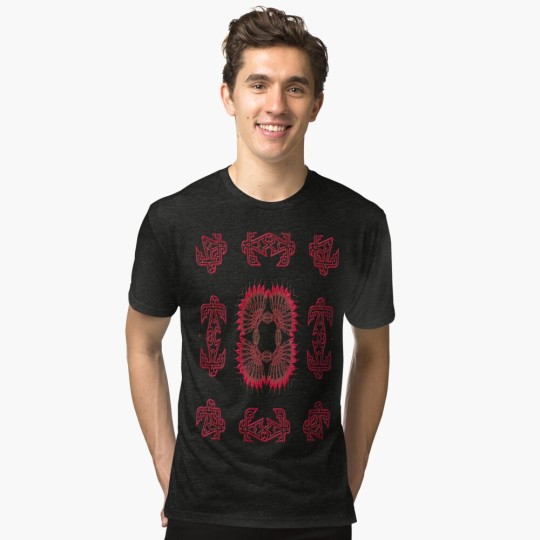
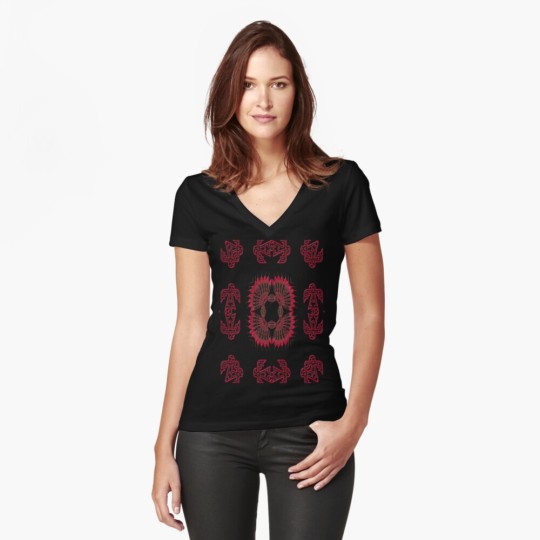
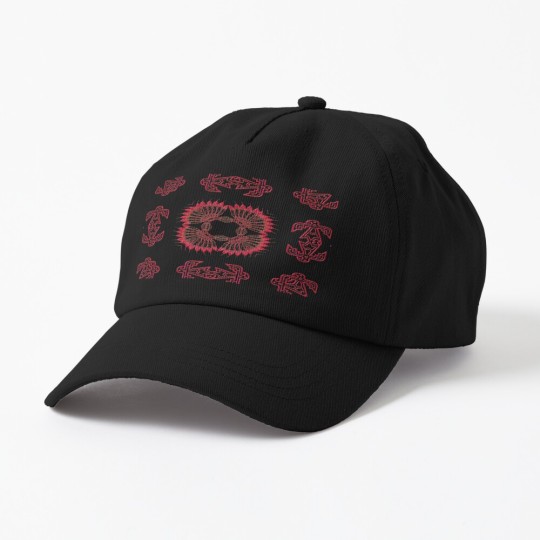
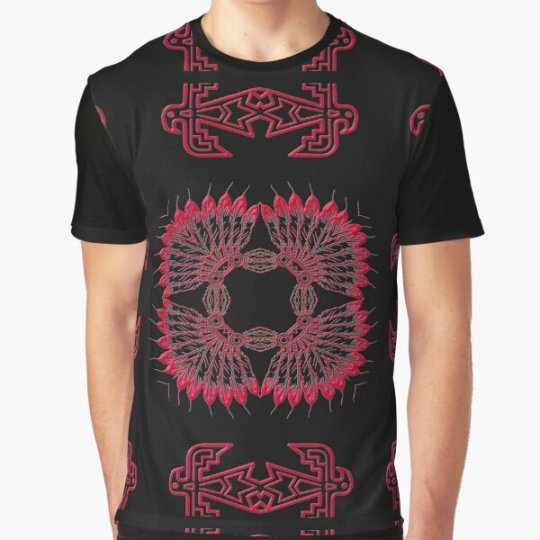
(via "UNIQUE RED NATIVE AMERICAN ART CHIEF HEADDRESS EAGLE TOTEM PATTERN " Graphic T-Shirt for Sale by Frantz CIALEC)
#findyourthing#redbubble#raleksd#artvsartist#the tribal chief#indigenous#nativeamericans#native indians#native#native american headdress#navajo#sioux#warrior#apaches#tribal art#feathers#totem#birds#eagles
1 note
·
View note
Text

Lakota Trinity by the late artist Father John Giuliani
"In this image, the great Father—Wakan Tanka—appears with a full headdress of eagle feathers in a halo of light.
His open hands deliver the Son, a victorious Sioux warrior whose raised arms and open hands reflect a similar gesture of self-giving.
He wears a richly decorated buckskin war shirt—heavily fringed, beaded and painted with the four color circle of the universe as its breast plate.
The eagle represents the Holy Spirit and completes the spiral of trinitarian love and unity."
From the Catholic Extension Society.
#religion#christianity#catholicism#native american#trinity#holy trinity#god#trinity sunday#art#divinum-pacis
324 notes
·
View notes
Text
Out of all my ideas ( Which are going into a set of Noa x Reader Imagines, part three babey ) there is one I think I might wanna make a oneshot for purely out of explaining in more depth. Or maybe it'll eventually make its way into the Customary Series, IDK what to do with half the ideas I have okay lol. Let me shoot the idea at you guys, that I hope was good because I was high as a kite when I thought of it: SO like. Obviously, marriage is a (slightly) different concept for the Apes. It means the same as with humans, being bound to one for the rest of your life with love, adoration and protectiveness, but there's no paper/documentation/anything like that in their society but just imagine like? A ceremony of sorts? Like, maybe the night before you mate for the first time? ESP. With Noa because he's you know. The Leader of the Eagle Clan. The future. It's incredibly celebrated. MAAYBE THERE's a blessing from Dar as she accepts you into their family unit. Bless of the fruit that you two share, bless the nest, you two ACTUALLY TOUCH FOREHEADS IN FRONT OF THE ENTIRE CLAN FOR THE FIRST TIME, you're absolutely decked out in finely and intricately detailed pieces of gear. Headdress, arm bands, a sash around your waist. Noa is wearing a matching set, maybe small details of his role of the Eagle Clan tied in there in the prospect of feathers, etc. IDK just an idea dkafdklsf
73 notes
·
View notes
Note
I have held out as long as I could. What Teba thoughts are currently swirling around?
OH MY GOODNESS! Finally got around to checking my silly inbox! My apologies!! I presume we’d like some more Dad Teba headcanons perhaps? hehe let me see here..
1. Teba gifted both Link and Zelda a hand crafted Rito headdress! Each headdress has each of their feathers (Teba, Tulin, and Saki) and next to the feathers (for Zelda) is a silent princess and (for Link) a blue nightshade to represent their place in their little Rito family! Hehe
2. Teba Knows Zelda’s favorite treat is fruit cake, always knows to bring her some when they see one another.
3. If any one in the group for some reason can’t sleep, or are struggling with nightmares and such, Teba is willing to stay up and whether they want to talk or just sit and be with each other’s company, then he’ll do just that.
4. I feel like Teba has very keen eyes for details and keeps in mind what everyone enjoys, dislikes, and needs.
5. Everyone likes to cuddle up against Teba, especially if they’re traveling in colder regions!
6. Teba is both impressed and bewildered when he sees Link eating rocks for the first time. There are many things about Link that impresses Teba, and eating rocks? Definitely up there.
7. Teba deeply respects Link, Zelda, and the sages but finds it difficult in his heart to accept the fact that kids are the ones holding the entire kingdom on their shoulders. It’s both admirable but heartbreaking.
8. Was so proud of Tulin when he became a sage but so worried. (Even if we don’t see it, I can imagine Teba feeling overcome with emotion when he gifts Tulin the Great Eagle Bow. His boy is growing up aksjs)
9. Zelda once gave him a silent princess flower and he safely keeps it wrapped around the belt of his armor.
10. Basically anything the others give him, it can be a tiny little trinket or something that held memories, Teba keeps it safe and at his home (or the flight range)
11. I like to think Teba has pictures around of both his family and his found family heh
12. Zelda likes taking the most silliest pictures of him with the Shiekah Slate/Purah pad
13. I think..when Teba sleeps he sometimes lets out little chirps ;-;
14. Teba really wants both Link and Zelda to rest.
(Often finds Zelda sleeping after working all night and tucks her into bed. Smh. She’s also fallen asleep on Teba many times.)
15. Teba struggled to get Zelda to open up about what was going on in her mind, eventually, they had a deep heart to heart and she opened up about her fears, traumas, and heavy burdens and weight she must carry alone and many tears were shed but with tears comes big and warm feathery hugs. He understands that she went through pain that no one her age should go through.
16. In fact..I imagine he’s had a heart to heart with all of his companions, he’s a very good listener and a friend and father figure to all.
17. Would not hesitate to die protecting the ones he cares for
18. Teba I believe is a Rito warrior who fights not just out of duty but out of love. Love for his home, his family, (blood related or not) friends. Overall, I think Teba is a warrior with a very golden heart which is why he was chosen to be Elder.
19. When he’s Elder however, he misses his companions, or as he likes to call them, his “kiddos”
20. Gets really happy when Link and Zelda visit (they visit their little Rito family very often.) Link and Zelda have their own little hammock for when they visit and stay the night!
21. Sometimes when Link and Tulin are off playing and being the best brothers, Zelda likes to sit with Teba and just talk.
22. Teba likely felt frustrated not being able to help search for Link and Zelda when they went missing after the upheval
23. Relief + Concern was felt when Link came back safely but ..WITH A NEW ARM??
24. Very happy to know link was safe but I can imagine not all was well knowing Zelda was still missing. The family wasn’t complete, you know? Agh!
25. When the Light Dragon (Zelda) flies by the regions of her companions (Sidon, Teba, Tulin, Riju, Yunobo) they all can feel Zelda’s presence but don’t understand why (yet)
25. Teba wouldn’t have fallen for Puppet Zelda, I think he would have been able to easily see through the disguise. That’s a dad’s intuition!
26. Yeah, Teba finding out about Zelda’s fate and becoming the light Dragon? He wasn’t okay. Not at all. Silent tears were shed. It was the closest experience to Teba “losing” a child and he never really recovered from that.
27. Teba once promised Zelda he would take her flying.
28. He did. When he flew beside the Light dragon and when he did he says with a bitter chuckle,
“This wasn’t exactly what I was hoping for.”
IM SORRY.
29. Trust me, they had a very happy family reunion. Had a difficult time letting either Link, Zelda and Tulin out of his sight and became slightly anxious.
30. Cannot comprehend what Zelda went through and the sacrifice she made. Deeply admires her but his heart aches for her too.
31. (HAPPY ZELINK ONE I SWEAR) Teba is the one to walk Zelda down the aisle when she marries Link. 🤍
Hope you enjoyed these!! Ah! If you ever want more well..I’m always here! I love found family so much! Hehe 😭
#legend of zelda#breath of the wild#tearsofthekingdom#age of calamity#botw#totk#loz aoc#zelda#loz#loz breath of the wild#loz tears of the kingdom#princess zelda#loz botw#champions botw#nintendo#teba#bird dad teba#prince sidon#yunobo#riju#tulin#link#totk zelink#botw zelink#zelink#totk sages#zelda headcanons#headcanon#found family
33 notes
·
View notes
Text
Tonantzin Guadalupe 🌵🌹
The original \/u| \//\ goddess I created in 2013 is Maria Rosa. Her design was inspired in major part between the miracle of La Virgen de Guadalupe and the concept of Mary Queen of Heaven.
I was recently commissioned to create a new (\/) Goddess inspired similarly between Guadalupe and Tonantzin by my chingona hermana Janet Bella Rosa who also knew Mi padrino Antonio 🙏 I felt his spirit guiding me to connect our visions! 💞
Tonantzin is an enduring Nahuatl title for the maternal aspect of any Aztec goddess, much like “Our Lady”, rather than the name of a particular goddess. I chose a blue background to parallel Her starry mantle of heaven and also represent Lake Texcoco since the eagle, snake, and cactus from its story of the founding of ancient Mexico there are present. 💙🌵
Tonantzin in various forms is frequently depicted with eagle feet so I thought it appropriate to have the legendary golden eagle clutch the silvery moon below Her in place of Guadalupe’s cherub 🦅 🌙 Tonantzin is often known, by many names, to wear a skirt of snakes- the celestial Aztec earth mother Coatlicue’s particular name translates to “She of Snake Skirts”. So I couldn’t help but see the snake emerge from the opening in Her folds here. Frequently in Aztec art snakes emerging from or replacing body parts represents blood so I feel a menstrual element from how the snake manifested in this vision 🐍 🩸
Many believe that the apparition of La Virgen de Guadalupe on Tepeyac Hill unto St. Juan Diego, an Indigenous peasant originally named Cuauhtlatoatzin meaning “Talking Eagle”, was a vision of a new form of Tonantzin. Her local temple had formerly been on that very site, destroyed by conquistadors. When Cuauhtlatoatzin received these holy visions, the Goddess spoke to him not in Spanish but in his native Nahuatl language even though She identified Herself as The Virgin Mother of God. Even the Church documents testify that The Holy Mother assured him in his moment of doubt, in his Indigenous tongue, “Am I not here who am your Mother?” Indeed Tonantzin Coatlicue herself is said to have had her own divine conception via a feather 🪶
The miraculous vision of Guadalupe that appeared upon Juan Diego/Talking Eagle’s tilma is often seen as a self portrait by Her and there are many analyses of the visual element’s encoding of Aztec symbolism. I took these theories and insights into consideration while creating this vision.
Even within the suppression of Spanish colonization ancient indigenous Mexican Curanderismo healing practices were able to persevere and often in the name of La Virgen de Guadalupe, under the protection of Her image.
Choose-your-goddess prints now include Tonantzin Guadalupe!

🌟🌟🌟🌟🌟
“At home, on the evening of December 12th we may light a candle and place offerings of flowers, copal and chocolate in front of her statue or painting. In the public square, those who follow the Mexica spiritual tradition will join brothers and sisters for an all-night vigil of prayer, Danza, offerings, and songs to her, who is Tonantzin Tlalli Coatlicue, who was always honored at the hill of Tepeyac. As we salute the Four Winds and dance in the ceremonial circle, we honor those who have gone before us, the courageous people who kept traditions alive through the centuries despite the threat to their life if discovered. The feathers in the copilli, the ceremonial headdress worn by the dancers, will draw down the energy of the cosmos into Mother Earth, our beautiful Tonantzin Tlalli Coatlicue to help her heal from the many ways she is dishonored.
Nearby, children will play and laugh, faces smeared with the traces of candy and the cinnamon of churros, the delicious deep fried pastry covered with sugar and cinnamon while the sound of mariachi music adds to the feeling of a fusion of cultures and beliefs. If you wander the crowded street you will see a handful of Catholic pilgrims on their knees on the hard pavement slowly make their way to the entrance of the church in gratitude for answered prayers.
And, in spite of quiet official church disapproval, the local parish priest will invite Indigenous ceremonial dancers to participate during the special December 11-12 mass for Our Lady of Guadalupe. Inside the church, for a few moments, Mayan copal will blend with European frankincense, quetzal feathers will dance on the air, and elders with bundles of aromatic rosemary plants will cleanse the People’s spirit. The two cultures, reconciled at this moment, acknowledge their bond of love for the Woman Who is Cloaked with the Sun; a bridge of Light between peoples.”
- Maestra Grace via Curanderismo.org
#curanderismo#tonantzin#virgen de guadalupe#holy mother of god#mother goddess#goddess art#brujeria#marian devotion#folk catholicism#folk traditions#ancient origins#Aztec
105 notes
·
View notes
Photo

The Sioux who Married the Crow Chief's Daughter
The Sioux who Married the Crow Chief's Daughter is a legend of the Lakota Sioux about Chief Big Eagle who left his people to marry a woman of the enemy Crow nation but never forgot the duties owed to his own people. The story highlights the values of personal honor and integrity.
It is also cited as an example of the practice of 'counting coup' and its importance in Native American warfare, of the value of horses in the tradition of the Plains Indians Culture, the challenges of inter-tribal marriages, and how members of different tribes who spoke different languages communicated with each other through signs.
The story is among the most popular of the Lakota Sioux and frequently anthologized as it is, at once, a love story, an adventure tale, and provides insight into the Plains Indians Culture.
Counting Coup
Historically, counting coup was a highly respected tradition of establishing one's reputation as a warrior for bravery and skill in battle. The warrior sought to touch an enemy, without killing him, either with the hand, a spear or lance, one's bow, a knife, or the object known as a coup stick – a wooden rod sometimes curved at the end. It was considered more honorable to disgrace an enemy warrior by counting coup on him than by killing him although the first 'coup' might then lead to his death in a second engagement.
The practice would be similar to tagging someone in a game. A warrior had to get close enough to the opponent to touch him and then get away before retaliation. A true 'coup' was struck when the warrior returned from its delivery unscathed. If one were successful, one could then place a notch in one's coup stick and/or place an eagle feather in one's headdress. One's opponent was understood to have been shamed and defeated by the coup and might leave the field of battle. If he refused to and was then killed by the same warrior who had counted coup on him, that was understood as a second coup, and if the dead man were then scalped, that constituted a third coup, just as then taking the man's horse became a fourth.
The greatest warriors – of the Sioux as well as other Plains Indians nations – were recognized by the number of notches on their coup sticks, feathers in a headdress, or other talismans indicating the number of opponents one had counted coup against successfully. Scholar Adele Nozedar comments:
The greatest honor was that initial touch, that contact with the living enemy. This was considered to be even more important than the killing. Considering this logically, it takes more nerve to have physical contact with a foe than it does to kill him from a distance, say, with a bow and arrow, or with a bullet from a gun. (117)
In the story, Big Eagle is respected by both his own people and the Crow nation he marries into for going into battle armed only with a coup stick. Although he participates in the war parties of the Crow against the Sioux, he refuses to kill his own people. In striking them with the coup stick, they become 'fallen' but have not been killed.
Continue reading...
33 notes
·
View notes
Note
Hi, hello. I'm so sorry to bother you. I saw a post you made back in September when you were reading The Lost Hero by Rick Riordan, where you mentioned that you're Cherokee. I am currently rereading the book and remembered something the fandom was constantly talking about some years ago, when I first read the series. So I have a question, if you don't mind. (though I totally understand if you mind, you don't have to answer if you don't wanna)
I think it's in Mark of Athena that Piper starts wearing an eagle feather in her hair. A lot of people have said that this is offensive, so the majority of the fandom depict her without it. When I first saw someone mentioning that it was offensive for Rick to do that, I just accepted it without questioning. But now I'm thinking about it and just did some research on the topic, but couldn't really find anything about why is it offensive. For what I read, Native Americans have in fact worn feathers in their hair through history and many still do, including Cherokee people; though it did mention that they had to be earned and were mostly used for ceremonies. So I'm just curious and wanted to ask a Cherokee person about it. If you don't mind.
I am coming from ignorance here. I am not USAmerican, I don't know anything about Native American people. I'm gonna keep doing research anyway.
Siyo and Hello! Wado and thank you for the ask.
The main issue with Piper and the feather isn’t necessarily the feather itself. As you mentioned, feathers are historically important to a lot of native tribes and cultures(a lot of, not all) and we still wear them to this day. In most practices, feathers have to be earned (have you ever seen a traditional headdress or war bonet from plains tribes? Every one of those is earned, gifted to someone, every one of those feathers is earned)
The issue with Piper isn’t that she’s wearing a feather, the issue is how she wears the feather. Simply putting a feather in your hair isn’t the traditional way Cherokee people wear feathers, like a lot of other tribes and people we have our own way of doing things. Nowadays you often see women dancers at powwows wearing a feather plume in their hair, but that’s different than braiding a feather in your hair like how Piper is described.
Another issue arises when we take into consideration the sexualization and misrepresentation of native women in media. There’s a rampant stereotype of a ‘Cherokee princess’ who wears inaccurate regalia (which, most of the time, includes a feather in hair not being worn in the proper way.) When Rick decided to have his Cherokee woman character wear a feather in her hair the wrong way, he was (unintentionally, I hope) feeding into this negative stereotype which hurts indigenous women to this day (Indigenous women in the United States and Canada are more likely to be raped or sexually assaulted)
There are many ways Rick could’ve represented Piper’s identity and heritage in her design. He could’ve met with Cherokee tribal members and asked them for their input, asked them how Piper should wear her feather. If he didn’t want to do that he could’ve scrapped the idea of the feather entirely. Piper could’ve been shown as wearing a tear dress, or a ribbon skirt, beaded jewelry, or he could’ve written her as braiding her hair.
There’s probably some stuff I’m missing cause it’s late, but here’s the gist of it.
6 notes
·
View notes
Note
taking you to jail for not doing braviary as you said in my ask /j
(I screwed up and forgot to do this one so we'll do it now)
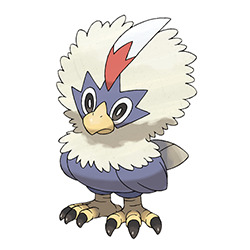
The U.S. Region obviously needed a bald eagle Pokemon, and we got one in the form of the (all-male for some strange reason) Rufflet line.
Rufflet itself is much more adorable in the 2D artwork than it actually ever looks in the games—something about the little face and fluffiness gives it a silly quality. However, beyond that, it's fairly generic. The colors are nice and the design works well enough, but lack of a real theme at this stage drags it down a bit. The only hint we have is the single feather on the head and the surrounding white fluff, which leads into...
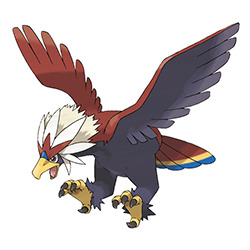
Braviary, which is much more bald eagle-ish than its pre-evo. According to some interviews, it seems like this bonnet is intentionally based off of indigenous headdresses. On the one hand, it's kind of under-emphasized for the most important part of the design... but on the other hand, they also said in that interview that it colors are based off the U.S. flag, and considering colonization it's probably best if they don't lean into any indigenous visuals.
Outside of that, it's pretty straightforward; bald eagle, flag colors, done. It's not bad or anything, but it doesn't stand out nearly as much as its counterpart the Vullaby line, which had much stronger concepts and visuals with their bone motifs.

Thankfully, Hisuian Braviary is honestly better across the board. First, no awkward mixing of indigenous imagery and with U.S.A. iconography—the headdress is now a pair of psychic-energy eyes, which gives it a distinct theme, and the flag colors have become a simple black and white monotone.
In fact, it's not even a bald eagle anymore. The white head still makes its connection to Braviary obvious, but the overall patterns and pallet now resemble a Steller's sea eagle. This is a nice touch that further differentiates it from the original design.

My only complaint is that the head feathers feel just a little too fluffy without the longer feathers there; it might have helped if the fluff around the legs was white too, or if the tail was fluffier. Otherwise, this design is a solid improvement.
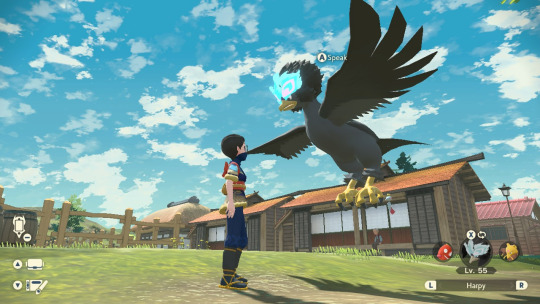
Also, I don't normally mention shinies in these reviews, but I have to give a special shout out to Hisuian Braviary's shiny. I'm lucky enough to have one in PLA, and it is stunningly gorgeous. The monotone black body allows the all-blue psychic eyes to pop compared to the white head feathers, and the black color also reduces unnecessary detail from the markings. It's also a nice biology reference, as Steller's sea eagles have a very rarely concurring dark morph.
Anyway, as a whole: this line is decent. Rufflet's very cute but a bit lacking in concept, and while Braviary has a bit more going on with it, it's ultimately beaten out by its Hisuian variant, which is the strongest of the three designs.
48 notes
·
View notes
Text
rdrp was already full of shitty people to begin with so i’m not sure why i’m surprised to see Real People cosplaying indigenous folk (band unspecified or straight up conjured) on rp servers😭
it’s obviously super frustrating to bear witness to, but the accents they put on are truly the cherry on top of the stinking pile of shit. then again, saying things like “the sioux and the apache nations are the same” (paraphrasing) when they’re regions apart is more embarrassing on their end…overall it’s not strange to HAVE an indigenous oc if you know wtf you’re talking about, but there’s a huge fucking difference between written and spoken rp.
sticking a bunch of eagle and owl feathers in your character model’s hair, or a straight up full headdress on em, is definitely not the way to go about being respectful..this shouldn’t even have to be said☹️
#hello all 2 followers#not directed at anyone i know fortunately#but people piss me off SO BAD !!#no. your lakota oc’s name is not John Smith.#you’re not slick wth#i am not the one who interacted with the people i’m referencing#auuughh i wish people could be NORMAL !!!!!!#thankfully..#but i’ve been around people like this#and seeing mfs like them in yt videos just revives that anger tbh#confronting them seemingly does nothing though#there’s always either a long asf excuse or left on seen#rdr2#rdr2 community#rdrp#actually important
2 notes
·
View notes
Text

Black Foot, Standing Bear, Big Eagle
Denver Public Library Special Collections
Creator : Rinehart, F. A. (Frank A.)
Date : 1898
Three Native American (Sioux) men, identified as Black Foot, Standing Bear, and Big Eagle pose near tepees ... Black Foot and Big Eagle are facing, Standing Bear is in profile. Each man holds a rifle next to him ... Black Foot wears moccasins, leggings, a breech cloth, an animal hide vest decorated with disks, a necklace, glasses, and a headdress ...Standing Bear wears beaded moccasins, leggings, a fringed and beaded shirt, and an ornate headdress ... Big Eagle wears moccasins, leggings, a print shirt, a hair pipe breastplate, eagle feathers in his hair, and holds a fur covered staff in his other hand ... Trans-Mississippi Exposition and Indian Congress, Omaha, Nebraska ... Dakota Indians--Clothing and dress; Indians of North America; Tipis; Big Eagle; Black Foot; Standing Bear, Luther, 1868 ...
55 notes
·
View notes
Text
Symbolism & Mythology in Pre-Columbian Art
Pre-Columbian art is a rich tapestry woven from the diverse cultures that flourished in the Americas before the arrival of European colonizers. Civilizations such as the Maya, Aztecs, and Incas imbue their artworks with complex symbolism and mythology that reflect their religious beliefs, social structures, and cosmological views. This article explores pre-Columbian art’s intricate symbolism and mythology, shedding light on the deeper meanings behind these ancient masterpieces.
The Maya: A World of Gods and Kings
The Maya civilization, known for its sophisticated writing system and astronomical knowledge, produced art with symbolic meanings. Maya art centrally explores the concept of the cosmos, which they divided into three realms: the heavens, the earth, and the underworld, or Xibalba. They often represent this tripartite division through vertical compositions in their art.
A prominent example is the depiction of the World Tree, or Wacah Chan, which connects the three realms. The tree’s roots extend into the underworld, its trunk symbolizes the earthly plane, and its branches reach the heavens. Artists often show the World Tree with a serpent at its base, representing the underworld, and a bird at its top, symbolizing the celestial realm. This motif underscores the Maya belief in the interconnectedness of all levels of the universe.
Kings and deities are another significant focus in Maya art. Rulers were often depicted in elaborate headdresses and costumes, symbolizing their divine right to govern. The headdresses frequently featured motifs such as jaguars, serpents, and birds, each representing different aspects of power and the sacred. The Maya associated the jaguar with strength and the underworld, while they linked the serpent to rebirth and fertility.
The Aztec: A Pantheon of Powerful Deities
The Aztec civilization, which dominated central Mexico in the 14th to 16th centuries, left behind a wealth of art that provides insight into their complex religious beliefs. The Aztecs worshipped a pantheon of gods, each associated with different aspects of life and nature. These deities were often depicted in their art, each with distinctive symbols that conveyed their powers and attributes.
Huitzilopochtli, the god of war and the sun, is one of the most prominent figures in Aztec art. Artists often depict him as a hummingbird or an eagle, animals associated with the sun and warriors. They load his images with symbols of warfare, such as shields, spears, and hearts, representing the sacrifices made to sustain him. This god’s representation underscores the Aztec emphasis on warfare and human sacrifice as central elements of their religious practice.
Quetzalcoatl, the feathered serpent god, is another crucial figure in Aztec mythology. Represented as a serpent adorned with quetzal feathers, Quetzalcoatl symbolizes the dual aspects of the divine and the terrestrial. The feathers signify the heavens, while the serpent represents the earth. This duality reflects the Aztec belief in the cyclical nature of life, death, and rebirth.
The Inca: Divine Kingship and the Natural World
In the Andean highlands, the Inca civilization created art that reflects their reverence for nature and their concept of divine kingship. The Inca believed that their emperor, or Sapa Inca, was a descendant of the sun god Inti, and this divine connection is evident in their art.
Sun motifs are prevalent in Inca art, often appearing in gold artifacts and architectural designs. Gold, believed to be the sun’s sweat, was a sacred material used to create elaborate ceremonial objects. The sun disk, or Inti Raymi, commonly represents the sun god and his life-giving energy. These symbols reinforced the emperor’s divine right to rule and the central role of the sun in Inca cosmology.
Inca art also reflects a deep connection to the natural world. Animals such as llamas, condors, and pumas are frequently depicted, each holding specific symbolic meanings. The llama, a vital animal for transport and agriculture, symbolizes prosperity and sustenance. Soaring high in the Andes, the condor is associated with the heavens and acts as a messenger between the earthly and divine realms. The puma represents strength and is often associated with the earth.
Symbolism Across Civilizations: Common Themes
While each pre-Columbian civilization had unique artistic traditions, some common themes and symbols transcend cultural boundaries. One such theme is using animals to represent divine or natural forces. Jaguars, serpents, eagles, and other animals frequently appear in the art of different cultures, each imbued with specific symbolic meanings. These animals often act as intermediaries between the human and the divine, reflecting the belief in a world where nature and the supernatural are intertwined.
Another common motif is the depiction of deities and rulers with elaborate regalia that signify their power and divine status. These figures are often shown with headdresses, jewelry, and weapons, symbolizing their connection to the gods and authority over the earthly realm. Using such symbols helped legitimize their rule and convey their role as intermediaries between the human and the divine.
Conclusion
The art of pre-Columbian civilizations is a testament to their rich mythological and symbolic traditions. Through intricate depictions of gods, animals, and cosmological concepts, these artworks provide a window into ancient peoples’ spiritual and cultural lives. By understanding the symbolism and mythology embedded in these pieces, we can better appreciate the complexity and depth of pre-Columbian art and the civilizations that created it.
Why a Certificate of Authenticity is Essential When Purchasing Artifacts
Research Academic Papers and News Articles
#ancient art#ancient history#archaeology#pre-columbian#art history#artifacts#inca#aztec#mayan#south america#Precolumbian art#Pre-columbian art#Pre-columbian artifacts
3 notes
·
View notes
Text

Unknown #Blackfeet artist, Headdress, ca. 1870, Stroud cloth, quills, ermine, horsehair, Golden Eagle feathers, Gift
2 notes
·
View notes
Text
World building and theories of Engage
Citrinne's fashion
Citrinne's name comes from the yellow variety of quartz called 'citrine'. Her name comes from the Old French word for 'lemon'. In Scotland, between 300 and 150 BC, citrine was found in the handles of swords and daggers as ornamentation and because the stone was believed to offer protection. It is also associated with success and wealth.
Citrinne flashes her noble status with feathers, gemstones and gold. In her hair she adorns unnecessary decoration. One of the clips does little to keep her hair out of her face nor do they have a practical purpose; instead they are a symbol of her excess. The adornment of feathers was a practice respected and observed in Scotland. Feathers in bonnets or the hair were displayed with the quill part hidden and the wide part in display. Traditionally an eagle feather was displayed to show rank and heraldry. It is likely that Citrinne uses feathers in the same way.
Down her arms he wears a mentelet which is a short cape often emanating from interesting decorative sleeves and elaborate ends which were worn by women. Citrinne's elaborate ends are made up of gold, feathers and red fabric. The drape, shawl effect comes down from torc positioned ringlets around the arm in a good and diamond design. The fabric used would have been an expensive fabric, likely silk.
Citrinne's girdle belt is elaborate as her wealth would allow. She has gold, stud details, woven decorations and gemstones on her waistline to show off her status. The two decorative pendant mounts could also be a place for her to hang her purse. Her dress has no pockets to do so.
Underneath her dress she wears a chemise to protect her dress from sweat and body oils. It is likely that her chemise is pieces together by thin, smooth, fine linen for breathability and comfort.
Her dress is a sleeveless, ankle length garment with modest tailoring rather than a rigid structure. The flowing garment has a distinctive border to protect the edge from fraying. The design is similar to the clan of the Brodian royal family. The female version of tartan was often simpler in design.
Another expensive item she wears is her hoses. They resemble a tight fitting modern pair of thighs. Most hoses would be baggy and constructed of cheap materials. The fact that Citrinne's rights are form fitting adds to the expense. It is likely that they are woven from fine wool for warmth. Her boots are also expensive and would be worn for riding her horses.
The stones seen in her and other Brodian nobles accessories could be red jasper, also known as the 'warrior's stone's in Scotland, which is said to encourage strength, focus and determination.
For her casual wear she adorns a jacket over a dress. The jacket has furry cuffs and collar to keep her warm. It is a shorter jacket designed to empathise her skin waist. She adorns similar belts to the battling attire so she can carry purses and weaponry with her while keeping her hands free. She wears elaborate gold jewellery featuring a bejewelled medallion necklace, a good choker, jewelled headdress and gold earrings. The hoops represent Alcryst and Diamant. The triangular crescent is a symbol of the moon (Alcryst and ignes) and the circular hoop is a symbol of the sun (Diamant and sol). Her red court shoes are subtle, less pointy nod to poulaines which were worn by the wealthy in medieval times.
8 notes
·
View notes
Text
10/3/24
The lady above, a delicate thing.
Swirls, great swathes of fabric dresses, trails of feathers. Each feather is an eye, each trailing at the end of silver hairline threads of experiential awareness. The eyes wobble, warping in and out of three-dimensional obligations. This is a mirage of separation, the wife and the husband are but mirrors of one another - Zeus, jealous King, splits other couples so that they cannot walk as he does.
She is her headdress of flaming sundogs and her heels of wicked hail. The softness of her body emerges in voluptuous, well-fed clouds drunk on rainwater. She grasps at his attention, a bloodhound after every expression and every change in movement.
A body gives off popping colours and electromagnetic suggestions and needles full of loom-tied threads which pierce into the Tapestry and reshape it, making it in our own image like corpse stains on carpet; she bears it, grasps, fondles, caresses, pulls at the form like hot candy and reshapes its expulsions like droplets shape rainbows.
In each and every molecule is an entire Universe, and they are understanding of it. The Self and the Other, the man and his reflection. Here: Full-breasted but untouchable, the goddess stands as tall and as erect as he, vicious hawk’s eyes centred, her thighs split only into the channels through which lightning must flow. But here is the secret: Two are one.
There is no Zeus without wives, women, without mothers and daughters, without attendees and revolutionaries. He is the bitter jealous, four-armed ruler, four-legged lover, centipedal force of the Sun and Moon’s confined, vivid coupling. He is the immensity of the pregnant spring sky which cries out from the weight of its own blackness, bending, swirling into thunderous shapes and collapsing into the Earth. She is this too: She follows, hounds, calls, arrests, ties to the marital bed; she is his body that aches and swoops as the eagle with its fishhook claws…
#sorry to everyone who expects this blog to be comprehensible beyond the rare weather energy posts#the choir //#wives //#zeus //
3 notes
·
View notes